Wireless Telegraphy: The Preece and Marconi Systems
W. H. Preece
Science has conferred one great benefit on mankind. It has supplied us with a new sense. We can now see the invisible, hear the inaudible, and feel the intangible. We know that the universe is filled with a homogeneous continuous elastic medium which transmits heat, light, electricity and other forms of energy from one point of space to another without loss. The discovery of the real existence of this "ether" is one of the great scientific events of the Victorian era. Its character and mechanism are not yet known to us. All attempts to "invent" a perfect ether have proved beyond the mental powers of the highest intellects. We can only say with Lord Salisbury that the ether is the nominative case of the verb "to undulate." We must be content with a knowledge of the fact that it was created in the beginning for the transmission of energy in all its forms, that it transmits these energies in definite waves and with a known velocity, that it is perfect of its kind, but that it still remains as inscrutable as gravity or light itself.
Any disturbance of the ether must originate with some disturbance of matter. An explosion, cyclone, or vibratory motion may occur in the photosphere of the sun. A disturbance or wave is impressed on the ether. It is propagated in straight lines through space. It falls on Jupiter, Venus, the Earth, and every other planet met with in its course, and any machine, human or mechanical, capable of responding to its undulations indicates its presence. Thus the eye supplies the sensation of light, the skin is sensitive to heat, the galvanometer indicates electricity, the magnetometer indicates disturbances in the earth’s magnetic field. One of the greatest scientific achievements of our generation is the magnificent generalization of Clerk-Maxwell that all these disturbances are of precisely the same kind, and that they differ only in degree. Light is an electromagnetic phenomenon, and electricity in its progress through space follows the laws of optics. Hertz proved this experimentally, and few of us who heard it will forget the admirable lecture on "The Work of Hertz" given in this hall by Prof. Oliver Lodge three years ago.
By the kindness of Prof. Silvanus Thompson I am able to illustrate wave transmission by a very beautiful apparatus devised by him. At one end we have the transmitter or oscillator, which is a heavy suspended mass to which a blow or impulse is given, and which, in consequence, vibrates a given number of times per minute. At the other end is the receiver or resonator, timed to vibrate to the same period. Connecting the two together is a row of leaden balls Suspended so that each ball gives a portion of its energy at each oscillation to the next in the series. Each ball vibrates at right angles to or athwart the line of propagation of the wave, and as they vibrate in different phases you will see that a wave is transmitted from the transmitter to the receiver. The receiver takes up these vibrations and responds in sympathy with the transmitter. Here we have a visible illustration of that which is absolutely invisible. The wave you see differs from a wave of light or of electricity only in its length or in its frequency. Electric waves vary from units per second in long submarine cables to millions per second when excited by Hertz’s method. Light waves vary per second between 400 billions in the red to 800 billions in the violet, and electric waves differ from them in no other respect. They are reflected, refracted and polarized, they are subject to interference, and they move through the ether in straight lines with the same velocity, viz, 186,400 miles per second—a number easily recalled when we remember that it was in the year 1864 that Maxwell made his famous discovery of the identity of light and electric waves.
Electric waves, however, differ from light waves in this, that we have also to regard the direction at right angles to the line of propagation of the wave. The model gives an illustration of that which happens along a line of electric force; the other line of motion I speak of is a circle around the point of disturbance, and these lines are called lines of magnetic force. The animal eye is tuned to one series of wave; the "electric eye," as Lord Kelvin called Hertz’s resonator, to another. If electric waves could be reduced in length to the forty-thousandth of an inch we should see them as colors.
One more definition, and our ground is cleared. When electricity is found stored up in a potential state in the molecules of a dielectric like air, glass, or gutta-percha the molecules are strained, it is called a charge, and it establishes in its neighborhood an electric field. When it is active, or in its kinetic state in a circuit, it is called a current. It is found in both states—kinetic and potential—when a current is maintained in a conductor. The surrounding neighborhood is then found in a state of stress, forming what is called a magnetic field.
In the first case the charges can be made to rise and fall, and to surge to and fro with rhythmic regularity, exciting electric waves along each line of electric force at very high frequencies, and in the second case the currents can rise or alternate in direction with the same regularity, but with very different frequencies, and originate electromagnetic waves whose wave fronts are propagated in the same direction.
The first is the method of Hertz, which has recently been turned to practical account by Mr. Marconi, and the second is the method which I have been applying, and which, for historical reasons, I will describe to you first.
In 1884 messages sent through insulated wires buried in iron pipes in the streets of London were read upon telephone circuits erected on poles above the house tops, 80 feet away. Ordinary telegraph circuits were found in 1885 to produce disturbances 2,000 feet away. Distinct speech by telephone was carried on through one-quarter of a mile, a distance that was increased to 1 1/4 miles at a later date. Careful experiments were made in 1886 and 1887 to prove that these effects were due to pure electromagnetic waves, and were entirely free from any earth-conduction. In 1892 distinct messages were sent across a portion of the Bristol Channel, between Penarth and Flat Holm, a distance of 3.3 miles.
Early in 1895 the cable between Oban and the Isle of Mull broke down, and as no ship was available for repairing and restoring communication, communication was established by utilizing parallel wires on each side of the channel and transmitting signals across the space by these electromagnetic waves. [p.246]
The apparatus (fig. 1 ) connected to each wire consists of—
(a) A rheotome or make and break wheel, causing about 260 undulations per second in the primary wire.
(b) An ordinary battery of about 100 Leclanche cells, of the so called dry and portable form.
(c) A Morse telegraph key.
(d) A telephone to act as receiver.
(e) A switch to start and stop the rheotome.
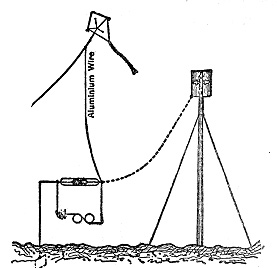 FIG. 1. Diagram of connections of Mr. Preece’s system.
FIG. 1. Diagram of connections of Mr. Preece’s system.
Good signals depend more on the rapid rise and fall of the primary current than on the amount of energy thrown into vibration. Leclanche cells gave as good signals at 3.3 miles distant as 2 1/2 horse-power transformed into alternating currents by an alternator, owing to the smooth sinusoidal curves of the latter. Two hundred and sixty vibrations per second give a pleasant note to the ear, easily read when broken up by the key into dots and dashes.
In my electromagnetic system two parallel circuits are established, one on each side of a channel or bank of a river, each circuit becoming successively the primary and secondary of an induction system, according to the direction in which the signals are being sent. Strong alternating or vibrating currents of electricity are transmitted in the first circuit so as to form signals, letters, and words in Morse character. The effects of the rise and fall of these currents are transmitted as electromagnetic waves through the intervening space, and if the secondary circuit is so situated as to be washed by these ethereal waves, their energy is transformed into secondary currents in the second circuit, which can be made to affect a telephone and thus to reproduce the signals. Of course their intensity is much reduced, but still their presence has been detected, though five miles of clear space have separated the two circuits.
Such effects have been known scientifically in the laboratory since the days of Faraday and of Henry, but it is only within the last few years that I have been able to utilize them practically through considerable distances. This has been rendered possible through the introduction of the telephone.
Last year (August, 1896) an effort was made to establish communication with the North Sandhead (Goodwin) lightship. The apparatus used was designed and manufactured by Messrs. Evershed and Vignoles, and a most ingenious relay to establish a call invented by Mr. Evershed. One extremity of the cable was coiled in a ring on the bottom of the sea, embracing the whole area over which the lightship swept while swinging to the tide, and the other end was connected with the shore. The ship was surrounded above the water line with another coil. The two coils were separated by a mean distance of about 200 fathoms, but communication was found to be impracticable. The screening effect of the sea water and the effect of the iron hull of the ship absorbed practically all the energy of the currents in the coiled cable, and the effects on board, though perceptible, were very trifling—too minute for signaling. Previous experiments had failed to show the extremely rapid rate at which energy is absorbed with the depth or thickness of sea water. The energy is absorbed in forming eddy currents. There is no difficulty whatever in signaling through 15 fathoms. Speech by telephone has been maintained through 6 fathoms. Although this experiment has failed through water, it is thoroughly practical through air to considerable distances where it is possible to erect wires of similar length to the distance to be crossed on each side of the channel. It is not always possible, however, to do this, nor to get the requisite height to secure the best effect. It is impossible on a lightship and on rock lighthouses. There are many small islands—Sark, for example—where it cannot be done. [p.248]
In July last Mr. Marconi brought to England a new plan. My plan is based entirely on utilizing electromagnetic waves of very low frequency. It depends essentially on the rise and fall of currents in the primary wire. Mr. Marconi utilizes electric or Hertzian waves of very high frequency, and they depend upon the rise and fall of electric force in a sphere or spheres. He has invented a new relay which, for sensitiveness and delicacy, exceeds all known electric apparatus.
The peculiarity of Mr. Marconi’s system is that, apart from the ordinary connecting wires of the apparatus, conductors of very moderate length only are needed, and even these can be dispensed with if reflectors are used.
The transmitter.—His transmitter is Professor Righi’s form of Hertz radiator (fig. 2).
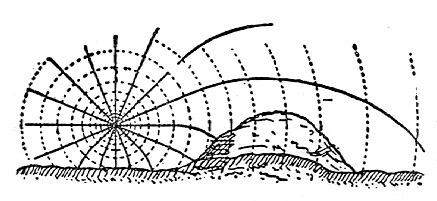 Fig 2. Diagram of the Marconi apparatus.
Fig 2. Diagram of the Marconi apparatus.
Two spheres of solid brass, 4 inches in diameter (A and B) , are fixed in an oil-tight case D of insulating material, so that a hemisphere of each is exposed, the other hemisphere being immersed in a bath of vaseline oil. The use of oil has several advantages. It maintains the surfaces of the spheres electrically clean, avoiding the frequent polishing required by Hertz’s exposed balls. It impresses on the waves excited by these spheres a uniform and constant form. It tends to reduce the wave lengths—Righi’s waves are measured in centimeters, while Hertz’s were measured in meters. For these reasons the distance at which effects are produced is increased. Mr. Marconi uses generally waves of about 120 centimeters long. Two small spheres, a and b, are fixed close to the large spheres, and connected each to one end of the secondary circuit of the "induction coil" C, the primary circuit of which is excited by a battery E, thrown in and out of circuit by the Morse key K. Now, whenever the key K is depressed sparks pass between 1, 2, and 3, and since the system A B contains capacity and electric inertia, oscillations are set up in it of extreme rapidity. The line [p.249] of propagation is D d; and the frequency of oscillation is probably about 250 millions per second.
The distance at which effects are produced with such rapid oscillations depends chiefly on the energy in the discharge that passes. A 6-inch spark coil has sufficed through 1, 2, 3, up to 4 miles, but for greater distances we have used a more powerful coil—one emitting sparks 20 inches long. It may also be pointed out that this distance increases with the diameter of the spheres A and B, and it is nearly doubled by making the spheres solid instead of hollow.
The receiver.—Marconi’s relay (fig. 2) consists of a small glass tube 4 centimeters long, into which two silver pole pieces are tightly fitted, separated from each other by about half a millimeter—a thin space which is filled up by a mixture of fine nickel and silver filings, mixed with a trace of mercury. The tube is exhausted to a vacuum of 4 millimeters, and sealed. It forms part of a circuit containing a local cell and a sensitive telegraph relay. In its normal condition the metallic powder is virtually an insulator. The particles lie higgledy-piggledy, anyhow, in disorder. They lightly touch each other in an irregular method, but when electric waves fall upon them they are "polarized," order is installed. They are marshaled in serried ranks, they are subject to pressure—in fact, as Prof. Oliver Lodge expresses it, they "cohere"—electrical contact ensues and a current passes. The resistance of such a space falls from infinity to about 5 ohms. The electric resistance of Marconi’s relay—that is, the resistance of the thin disc of loose powder—is practically infinite when it is in its normal or disordered condition. It is then, in fact, an insulator. This resistance drops sometimes to 5 ohms, when the absorption of the electric waves by it is intense. It therefore becomes a conductor. It may be, as suggested by Professor Lodge, that we have in the measurement of the variable resistance of this instrument a means of determining the intensity of the energy falling upon it. This variation is being investigated both as regards the magnitude of the energy and the frequency of the incident waves. Now such electrical effects are well known. In 1866 Mr. S. A. Varley introduced a lightning protector constructed like the above tube, but made of boxwood and containing powdered carbon. It was fixed as a shunt to the instrument to be protected. It acted well, but it was subject to this coherence, which rendered the cure more troublesome than the disease, and its use had to be abandoned. The same action is very common in granulated carbon microphones like [p.250] Hunning’s, and shaking has to be resorted to to decohere the carbon particles to their normal state. M.E. Branly (1890) showed the effect with copper, aluminum, and iron filings. Prof. Oliver Lodge, who has done more than anyone else in England to illustrate and popularize the work of Hertz and his followers, has given the name "coherer" to this form of apparatus. Marconi "decoheres" by making the local current very rapidly vibrate a small hammer head against the glass tube, which it does effectually, and in doing so makes such a sound that reading Morse characters is easy. The same current that decoheres can also record Morse signals on paper by ink. The exhausted tube has two wings which, by their size, tune the receiver to the transmitter by varying the capacity of the apparatus. Choking coils prevent the energy escaping. The analogy to Prof. Silvanus Thompson’s wave apparatus is evident. Oscillations set up in the transmitter fall upon the receiver tuned in sympathy with it, coherence follows, currents are excited, and signals made.
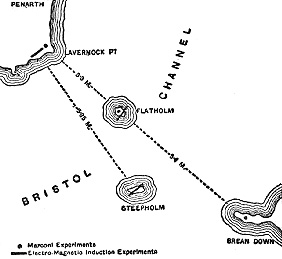 FIG. 3. Map of locality where the experiments were carried out.
FIG. 3. Map of locality where the experiments were carried out.
In open clear spaces within sight of each other nothing more is wanted, but when obstacles intervene and great distances are in question, height is needed tall masts, kites, and balloons have been used. Excellent signals have been transmitted between Penarth and Brean Down, near Weston-super-Mare, across the Bristol Channel, a distance of nearly 9 miles (fig. 3). (The system was here shown in operation.)
Mirrors also assist and intensify the effects. They were used in the earlier experiments, but they have been laid aside for the present, for they are not only expensive to make, but they occupy much time in manufacture.
It is curious that hills and apparent obstructions fail to obstruct. The reason is probably the fact that the lines of force escape these hills. When the ether is entangled in matter of different degrees of inductivity, the lines are curved, as in fact they are in light. Figure 4 shows how a hill is virtually bridged over by these lines, and consequently some electric waves fall on the relay. Weather seems to have no influence; rain, fogs, snow, and wind avail nothing.
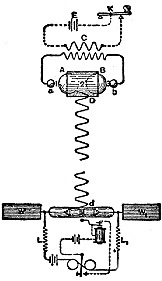 Fig. 4. Diagram illustrating the way in which hills are bridged by the electric waves.
Fig. 4. Diagram illustrating the way in which hills are bridged by the electric waves.
The wings shown in figure 2 may be removed. One pole can be connected with earth, and the other extended up to the top of the mast, or fastened to a balloon by means of a wire. The wire and balloon or kite, covered with tin foil, becomes the wing. In this case one pole of the transmitter must also be connected with earth. This is shown in figure 5.
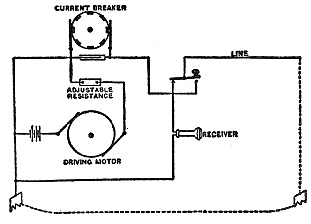 Fig. 5 Diagram of Marconi connections when using pole or kite.
Fig. 5 Diagram of Marconi connections when using pole or kite.
There are some apparent anomalies that have developed themselves during the experiments. Mr. Marconi finds that his relay acts even when it is placed in a perfectly closed metallic box. This is the fact that has given rise to the rumor that he can, blow up an ironclad ship. This might be true if he could plant his properly tuned receiver in the magazine of an enemy’s ship. Many other funny things could be done if this were possible. I remember in my childhood that Captain Warner blew up a ship at a great distance off Brighton. How this was done was never known, for his secret died shortly afterwards with him. It certainly was not by means of Marconi’s relay.
The distance to which signals have been sent is remarkable. On Salisbury Plain Mr. Marconi covered a distance of 4 miles. In the Bristol Channel this has been extended to over 8 miles, and we have by no means reached the limit. It is interesting to read the surmises of others. Half a mile was the wildest dream.
It is easy to transmit many messages in any direction at the same time. It is only necessary to tune the transmitters and receivers to the same frequency or "note." I could show this here, but we are bothered by reflection from the walls. This does not happen in open space. Tuning is very easy. It is simply necessary to vary the capacity of the receiver, and this is done by increasing the length of the wings W in figure 2. The proper length is found experimentally close to the transmitter. It is practically impossible to do so far away.
It has been said that Mr. Marconi has done nothing new. He has not discovered any new rays; his transmitter is comparatively old; his receiver is based on Branly’s coherer. Columbus did not invent the egg, but he showed how to make it stand on its end, and Marconi has produced from known means a new electric eye, more delicate than any known electrical instrument, and a new system of telegraphy that will reach places hitherto inaccessible. There are a great many practical points connected with this system that require to be threshed out in a practical manner before it can be placed on the market, but enough has been done to prove its value, and to show that for shipping and light-house purposes it will be a great and valuable acquisition.